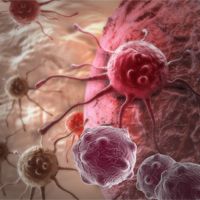Article
Cancer Cells: Glowing Review
Author(s):
Local recurrence is common after patients with solid tumors undergo surgery.

Local recurrence is common after patients with solid tumors undergo surgery.
The current process requires the pathologist to look at tissue samples immediately after surgery. Often, the margins are not clear in pathology reports, and sometimes, the reports are inaccurate.
If surgeons could detect residual cancer in the tumor bed during surgery, they might be able to increase the surgical margin, reduce the likelihood of re-excision, and select adjuvant therapies specific to the patient's cancer and stage.
A study published in Science Translational Medicine indicated residual detection was more than just a dream.
A team of researchers from Duke University School of Medicine working with scientists at the Massachusetts Institute of Technology (MIT) and Lumicell Inc. tested a new injectable agent that causes cancerous tumor cells to fluoresce, which could help surgeons spot all cancerous cells early.
The researchers enrolled 15 patients undergoing surgeries for soft-tissue sarcoma or breast cancer who all received LUM15. LUM15's innovators showed the drug allowed surgeons to scan the tumor bed during surgery to look for residual fluorescence.
It had the potential to increase the likelihood that the entire tumor was removed. This could prevent subsequent operation, possibly reduce cancer recurrence, and guide the dose and location of radiation therapy.
Just as it did in animal models, in this study, LUM15 caused cancerous cells to fluoresce in a manner that was on average five times brighter than normal cells. Patients experienced no adverse effects from LUM15.
LUM15 is a protease-activated imaging agent and the first of its class that had been tested for safety in humans. A new study has enrolled 50 women with breast cancer, and the researchers will monitor them for re-operation.


